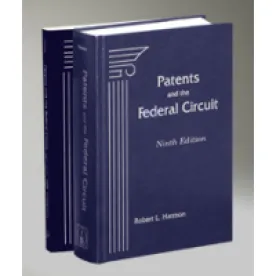The Federal Circuit yesterday issued a 2-1 precedential opinion in In re Cuozzo Speed Technologies, LLC , Appeal No. 14-1301 (Fed. Cir. Feb. 4, 2014), in which it affirmed the Patent Trial and Appeal Board (PTAB) in the first appeal of a final written decision in an inter partes review (IPR) decided by the Court.
The opinion addresses a series of significant issues: (1) the scope of judicial review for the decision instituting trial; (2) the applicability of the broadest reasonable interpretation (BRI) claim construction standard to post-grant proceedings; (3) the scope of the PTAB’s rulemaking authority under the America Invents Act (AIA); and (4) the PTAB’s rules governing amendments in post-grant proceedings. The Court affirmed the PTAB on all these issues, effectively adopting the positions set forth by the PTO solicitor.
The decision on institution is final and non-appealable
In holding that it lacked jurisdiction to review the PTAB’s decision to institute even after a final decision, the Court focused on the AIA’s statutory language. The majority opinion relied on prior precedent holding that 35 U.S.C. § 314(d) bars immediate review of a decision to institute IPR. It then concluded that § 314(d) similarly “prohibits review of the decision to institute IPR even after a final decision. On its face, the provision is not directed to precluding review only before a final decision. It is written to exclude all review of the decision whether to institute review.”
In the context of this discussion, the Court confirmed that mandamus relief is not available for immediate review of the denial or grant of a petition for IPR. The Court posited, however, that “mandamus may be available to challenge the PTO’s decision to grant a petition to institute IPR after the Board’s final decision in situations where the PTO has clearly and indisputably exceeded its authority.” While the Court declined to make such a holding on these facts, it provided a hypothetical suggesting an instance where such relief may be warranted, e.g., where the PTO institutes IPR based on “prior public use” in clear contravention of the statute.
The Court seems to have left open the question of whether a party could seek judicial review of a decision to institute IPR by challenging the PTO’s determination under the Administrative Procedures Act (APA). And that fact pattern is still at play in the first covered business method (CBM) review appealed to the Court in Versata Development Group v. SAP America, Inc., Appeal No. 14-1194 and Versata Development Group v. Lee, Appeal No. 14-1145. Versata filed a parallel APA action, challenging the PTAB’s decision to institute CBM review as beyond its authority. The Court held arguments in those cases on December 3, 2014. Judges Newman, Plager, and Hughes heard that appeal. Given the issues, another precedential opinion is likely to issue in the upcoming months.
Also pending is a petition for writ of certiorari in Zoll Lifecor Corporation v. Philips Electronics North American Corporation, et al., No. 14-619, which involves the denial of petitions for IPR. Zoll appealed the PTAB’s decisions to the Federal Circuit, which dismissed the case based on the same precedent relied upon by the Cuozzo panel in invoking the appeal bar of § 314(d). Before the Supreme Court, Zoll contends that the Federal Circuit’s interpretation of the statute effectively insulates the PTO from judicial review, contrary to established principles of administrative law. Zoll’s cert petition goes to conference on February 20, 2015. Grant of the petition, or even a request by the Supreme Court for input from the Solicitor General, would be significant. We are monitoring these cases and will provide alerts as developments occur.
Another related holding of practical importance is that the Court concluded that the IPR statute does not “expressly limit the Board’s authority at the final decision stage to the grounds alleged in the IPR petition.” In the Cuozzo IPR, the PTAB instituted review on a combination of prior art not specifically raised in the original petition with respect to each challenged claim. In other words, the PTAB instituted trial on grounds not specifically asserted in the petition. When Cuozzo challenged this action as contrary to the statutory provision governing institution decisions, the Court sided with the PTO and concluded that “[t]he failure to cite those references in the petition provides no ground for setting aside the final decision.”
BRI is the correct claim construction standard
The court affirmed the PTO’s use of the broadest reasonable construction (BRI) standard in PTO proceedings. First, the Court observed that the relevant statutory provision, 35 U.S.C. § 316, authorizes the PTO to promulgate rules governing the conduct of these proceedings. And that the PTO’s adoption of the BRI standard is in line with a long history of legal precedent applicable to various types of proceedings before the PTO, including initial examinations, interferences, and post-grant reviews, such as reissues and reexaminations. Against this background, the Court explained that, presumably, Congress intended for the BRI to be used, noting that nothing in the legislative history says anything to the contrary. In that regard, the Court referred to statements made by Senator Kyle during enactment of the AIA, suggesting that Congress was aware of the standard. The Court was not persuaded by arguments that the adjudicatory nature of the proceedings, or the procedural or practical limitations on claim amendment, make these proceedings materially different in this regard.
Of note, when reviewing the PTAB’s findings on claim construction, the court applied the Supreme Court’s recent guidance set forth in Teva Pharmaceuticals U.S.A., Inc. v. Sandoz, Inc., 135 S. Ct. 831, 841(2015) (see our recent alert for a summary of the decision). Finding no use of extrinsic evidence in the PTAB’s construction, the court review the construction de novo.
What is the impact of this decision?
First, once the PTAB renders its decision on institution, whether it is a denial or grant, that decision is unappealable to the Federal Circuit, either immediately or after a final decision in the proceeding. Of course, a party unhappy with the institution decision may request reconsideration of the decision. But the PTAB does not generally grant such requests. The Court suggested that mandamus may be available, but warned that very few circumstances would ever warrant such relief. It remains unanswered whether an APA challenge remains a viable option.
Second, it is now settled that the BRI standard applies in post-grant proceedings. This standard typically leads to a greater chance of finding prior art that anticipates or renders a claim obvious—which is good news for petitioners. Consistent with the Court’s reasoning in Cuozzo, the BRI standard applies in PTO proceedings in which claims may be amended. But beware of patents that expire during a post-grant proceeding. Expired patents are not construed under the BRI standard, as there remainsno opportunity to amend expired claims.
Finally, patent owners should understand that the PTAB is not strictly limited to the contents of the petition and can base its final decision on more than what is explicitly laid out in that initial pleading. To the extent the initial decision on institution is constructively immune from review on appeal, the parties must be prepared to litigate on the merits and create the best trial record for appeal. In this regard, much care and attention must be given to preserving issues and maintaining challenges to the PTO’s exercise of its authority in these contested proceedings.





 />i
/>i

